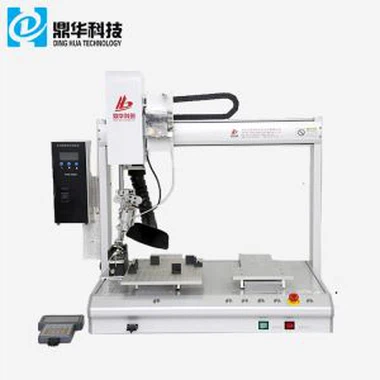
Surface Mount Rework Station
Semi automatic Surface Mount Rework Station with high successful rate of repairing. Welcome to know more about it.
Description
Automatic Surface Mount Rework Station


1.Application Of laser positioning Surface Mount Rework Station
Work with all kinds of motherboards or PCBA.
Solder, reball, desoldering different kind of chips: BGA,PGA,POP,BQFP,QFN,SOT223,PLCC,TQFP,TDFN,TSOP,
PBGA,CPGA,LED chip.
2.Product Features of CCD Camera Surface Mount Rework Station

3.Specification of DH-A2 Surface Mount Rework Station

4.Details of Automatic Surface Mount Rework Station



5.Why Choose Our Hot Air Infrared Surface Mount Rework Station?


6.Certificate of Surface Mount Rework Station
UL, E-MARK, CCC, FCC, CE ROHS certificates. Meanwhile, to improve and perfect the quality system,
Dinghua has passed ISO, GMP, FCCA, C-TPAT on-site audit certification.

7.Packing & Shipment of Solder Rework Station Hot Air Infrared

8.Shipment for Surface Mount Rework Station
DHL/TNT/FEDEX. If you want other shipping term, please tell us. We will support you.
9. Terms of Payment
Bank transfer, Western Union, Credit Card.
Please tell us if you need other support.
10. How DH-A2 Surface Mount Rework Station works?
11. Related knowledge
Reflow principle
Due to the need for miniaturization of electronic product PCB boards, chip components have emerged, and conventional
soldering methods have been unable to meet the needs. Reflow soldering is used in the assembly of hybrid integrated cir-
cuit boards, and the components to be assembled and soldered are mostly chip capacitors, chip inductors, mounted trans-
istors and two tubes. With the development of SMT's entire technology, the emergence of various SMD and SMD devices,
the reflow soldering technology and equipment as part of the mounting technology have also been developed accordingly,
and its application has become increasingly widespread. It has been applied in almost all electronic product domains. Reflow
is an English Reflow that re-melts the solder solder pre-dispensed onto the pad of the printed board to achieve a mechanical
and electrical connection between the soldered end of the surface mount component or the pin and the printed board pad.
weld. Reflow soldering is the soldering of components to PCB boards, and reflow soldering is for surface mount devices. Reflow
soldering relies on the action of hot gas flow on the solder joint. The gel-like flux reacts physically under the constant high-
temperature airflow to achieve SMD soldering. Therefore, it is called “reflow soldering” because the gas flows in the welder
to generate high temperature for soldering purposes.
Reflow soldering process requirements
Reflow soldering technology is no stranger to the electronics manufacturing industry. The components on the various boards
used in our computers are soldered to the board by this process. The advantage of this process is that the temperature is easy
to control, oxidation is avoided during the welding process, and manufacturing costs are easier to control. The inside of the
device has a heating circuit that heats the nitrogen gas to a sufficiently high temperature and blows it to the circuit board on
which the component has been attached, so that the solder on both sides of the component melts and bonds to the main board.
1. Set a reasonable reflow profile and perform real-time testing of the temperature profile on a regular basis.
2. Weld according to the welding direction of the PCB design.
3. Strictly prevent belt vibration during welding.
4. The soldering effect of the block printed board must be checked.
5. Whether the welding is sufficient, whether the surface of the solder joint is smooth, whether the shape of the solder joint
is half moon, the condition of the solder ball and the residue, the case of continuous soldering and the solder joint. Also check
the color change of the PCB surface and so on. And adjust the temperature curve according to the inspection results. Regularly
check the quality of the weld during the entire batch process
Reflow process
The process flow for soldering chip components to a printed circuit board using reflow soldering is shown in the figure. During
the process, a paste solder paste consisting of tin-lead solder, adhesive, and flux can be applied to the printed board by hand, semi-
automatic, and fully automatic. A manual, semi-automatic or automatic screen printing machine can be used. The solder paste is
printed on the printed board like a stencil. The components are then bonded to the printed board using manual or automated
mechanisms. The solder paste is heated to reflux using a furnace or a hot air blow. The heating temperature is controlled according
to the melting temperature of the solder paste. This process includes: preheating zone, reflow zone and cooling zone. The maximum
temperature of the reflow zone melts the solder paste, and the binder and flux vaporize into smoke.






